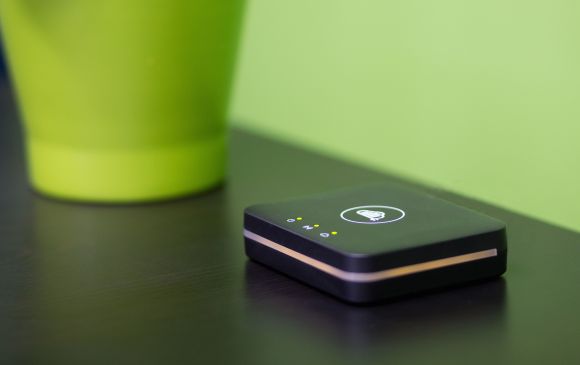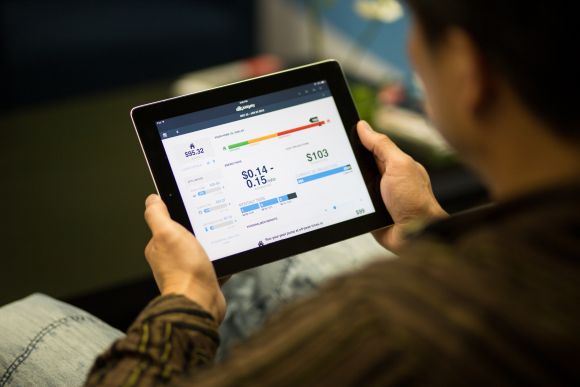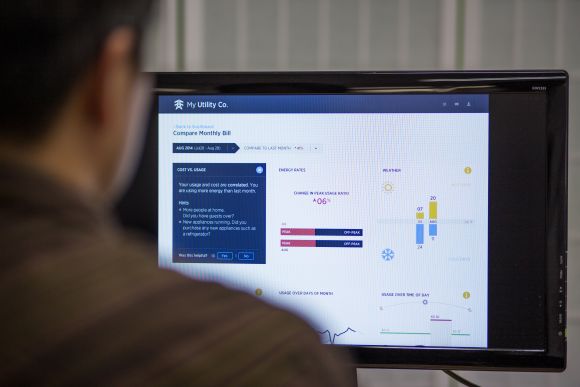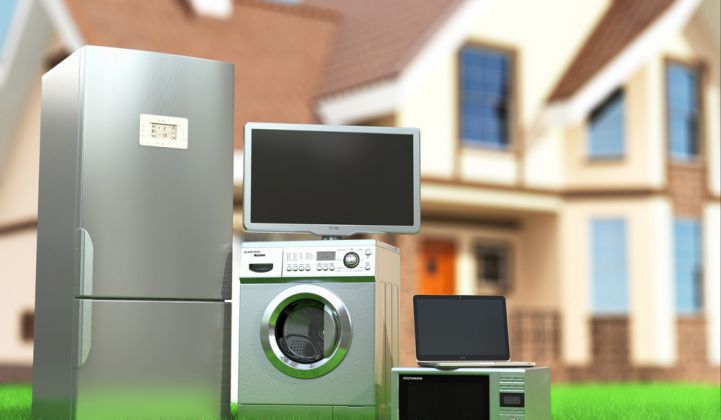Energy disaggregation is one of those groundbreaking new technologies that utilities are still figuring out how to use. Analyzing a simple, whole-home energy data stream to discern just how much power is being used specifically for heating, cooling, lighting and appliances is certainly something they’re excited about. But they’re also looking for tools that turn that information into value, both for themselves and for their customers.
On Tuesday, disaggregation startup Bidgely announced a new set of products that help underscore how this move from technology to tools is taking place. It’s being done through customers' smartphones and customer service reps’ computer screens -- and importantly, it’s being augmented with an in-home device that could make real-time energy disaggregation a reality.
Bidgely will be rolling out the new products with utility partners including TXU Energy, London Hydro and Hawaii’s Energy Excelerator, CEO Abhay Gupta said in an interview this week. All are part of its HomeBeat platform, based around the common concept of “connecting the utility with their customers, and eventually a range of utility programs,” he said.
The most noteworthy new addition is Bidgely’s HomeBeat Energy Monitor, the first hardware device from the Sunnyvale, Calif.-based startup. Compared to the smart thermostats, energy portals and in-home displays on the market, it’s a very simple device: “It talks to the smart meter using ZigBee SEP 1.1, and it has an Ethernet port so it can connect to the home router,” he said. “It’s just a bridge between the smart meter and the internet.”

But that simplicity allows Bidgely to price each monitor at $35, which is “a price point that’s sort of a breakthrough for the industry,” he said, compared to the typical $50 to $100 for a simple smart thermostat, or the $250 and up for a sleek Nest thermostat or a home energy sensor device.
It also allows Bidgely to collect a smart meter’s data in 5- to 10-second increments -- much faster than the 15-minute to hourly uploads being fed from the meter back to the utility. That data, in turn, goes straight to the internet, where Bidgely can analyze it, disaggregate it, and feed it back to the customer via web or mobile platforms.
More frequent data collection can help improve the accuracy of disaggregation algorithms, according to tests conducted by the Electric Power Research Institute. It also enables a set of real-time features important for capturing the interest of customers used to getting all the information they want at the tap of their smartphone's touch screen, he noted.
“There’s no room for patience here,” he said. “People are used to instant gratification. [...] The combination of our energy monitor and our new energy apps allows them to interact in that manner.”

Some of the real-time features Gupta highlighted include the ability for homeowners to get notification when their home energy exceeds a certain preset limit. The alerts come with details on which household systems and appliances are driving the excessive usage, along with recommendations for how to reduce it. Another is a “detective” feature that allows homeowners to learn just how much energy is being used by appliances, lights, consumer electronics or any other specific household load, by turning them on and off and reading the change in real-time energy consumption, he said.
Another arena where utility customers have little patience is in resolving bill disputes. That brings us to Bidgely’s new HomeBeat Agent tool, the utility-facing part of its product suite, which Gupta described as “a customer support tool to help solve the question of, ‘Why is my bill so high?’”
Bill disputes are the most common driver of customer calls, complaints, and, in competitive energy markets, the decision to switch from one energy provider to another, he noted. Traditionally, customer service representatives have had no direct data on what’s happening at that customer's home, forcing them to talk each customer through a series of questions to try to figure out what’s wrong.

Smart meters help solve the data problem, and some utilities are integrating that data into their billing and customer service systems to find more accurate answers to these kinds of disputes. Bidgely’s disaggregation capabilities can help bring more fine-grained detail to this resolution process, Gupta noted, but the information still needs to be matched up with data on whether a customer recently changed rate plans, or moved into a different rate tier earlier than usual in the month, or other factors that can influence higher-than-usual bills.
In other words, “disaggregation is one tool, but it’s not the only tool,” he said. The same broad statement could be made about the disaggregation technologies from competitors like PlotWatt, Navetas and Energy Aware, original technology developers like Enetics, and big companies including Belkin and Intel. Getting accurate data on individual loads is only the first step.



